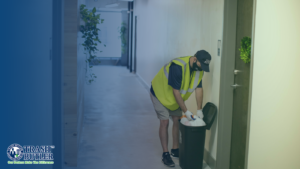Key Takeaways:
- Enhanced Quality of Life: Senior living amenities such as fitness centers, social spaces, and on-site salons boost residents’ physical health, combat loneliness, and promote self-care, significantly enriching their daily lives.
- Personalized and Holistic Care: From individualized fitness plans to mental wellness programs and nutritional support, senior living communities provide comprehensive care services that cater to each resident’s unique needs, enhancing their overall well-being.
- Sense of Community and Independence: Amenities like communal dining, organized social events, and convenient transportation services foster a strong sense of belonging and independence among residents, improving their mental health and overall satisfaction.
As we age, our desire for a vibrant and fulfilling life remains strong. Senior living communities have a unique opportunity to provide just that—a haven that nurtures not only physical well-being but also social connection, a sense of purpose, and ongoing growth.
Choosing a senior living community is more than focusing on the essentials; it’s about finding a place that feels like home. In this blog, we’ll explore some of the top amenities that enhance satisfaction in senior living and discuss how these features contribute to a better living experience, promoting well-being and happiness for seniors.
What Are Senior Living Amenities?
Senior living amenities are crucial features and services designed to improve the quality of life for seniors within a residential community. These amenities are tailored to meet older adults’ physical, social, and emotional needs, ensuring they live comfortably and enjoy a fulfilling and enriched life.
The scope of senior living amenities can be broad, ranging from practical services that enhance convenience and safety to recreational facilities that encourage social interaction and physical activity. At their core, senior living amenities aim to provide a supportive environment that promotes independence while offering the necessary assistance.
Importance Of Senior Living Amenities
Senior living communities offer more than a place to reside – they provide a lifestyle. But what makes one community stand out from another? It’s the amenities! These features go beyond the basics of meals and housekeeping, crucial to resident satisfaction and well-being. Let’s explore why amenities are so important in senior living:
Enhanced Quality of Life
The right amenities can enrich residents’ lives. Fitness centers promote physical health, while on-site salons and barbershops promote self-care and confidence. Social spaces like game rooms and courtyards foster connections and combat loneliness.
Individualized Needs
Senior communities cater to a diverse range of needs. Amenities like art studios or walking trails provide opportunities for personalized hobbies and interests. Libraries and educational programs keep minds active, while transportation services offer continued independence.
A Sense of Community
Senior living can sometimes feel isolating. Amenities like on-site restaurants with communal dining or movie nights create opportunities for residents to socialize and build friendships. This sense of belonging can significantly improve overall well-being.
Reduced Stress and Burden
Many amenities, like housekeeping or laundry services, free up residents’ time and energy. This allows them to focus on activities they enjoy and reduces the burden of daily chores.
Peace of Mind for Families
Knowing their loved ones have access to various amenities that promote physical, social, and mental well-being brings families peace of mind.
Holistic Care Services In Senior Living
Holistic care services are becoming an indispensable part of senior living amenities. These services focus on treating the whole person rather than just addressing specific health issues. They encompass a variety of offerings that contribute to residents’ physical, emotional, and mental well-being.
Physical Wellness
Physical wellness programs in senior living communities often include personalized fitness plans catering to each resident’s abilities. These programs might involve gentle forms of exercise like yoga, tai chi, or water aerobics, which are low-impact and promote flexibility and circulation. Professional staff are typically on hand to provide guidance and adapt exercises to individual needs, ensuring a safe and beneficial physical activity regime.
Emotional and Mental Wellness
Emotional and mental wellness are also critical components of holistic care services. Senior communities increasingly incorporate amenities like mindfulness sessions, art and music therapies, and even pet therapy, all of which have been shown to improve mental health and overall quality of life. These programs help combat loneliness, reduce stress, and provide a sense of community and belonging.
Nutritional Support
Nutrition plays a crucial role in holistic care. Senior living communities often employ nutritionists or dieticians who provide nutritious meals that cater to older adults’ dietary needs and restrictions. This holistic approach to dining ensures that meals contribute to residents’ health and wellness rather than merely serving as sustenance.
Continuous Health Monitoring
Another aspect of holistic care involves ongoing health monitoring. This can include regular check-ups, medication management, and access to medical professionals who coordinate with one another to provide a comprehensive healthcare plan for each resident. By integrating these services into their daily lives, seniors feel reassured and well-cared for, significantly contributing to their peace of mind and satisfaction.
These holistic care services, integrated into the broader array of senior living amenities, highlight a commitment to residents’ well-being and offer a more fulfilling living experience. By addressing multiple aspects of health and happiness, senior living communities can ensure a higher quality of life and truly cater to their residents’ needs.
Social And Recreational Activities For Seniors
Social and recreational activities are not merely amenities in senior living communities; they are fundamental components that contribute significantly to resident satisfaction and overall well-being. Let’s explore the importance of these activities and provide some engaging ideas for implementation.
The Significance of Social and Recreational Activities
- Combating Social Isolation and Loneliness: Social interaction is a cornerstone of mental and emotional health for older adults. Engaging activities provide opportunities for connection, reduce feelings of isolation, and foster a sense of belonging within the community.
- Promoting Cognitive Health: Regular participation in stimulating activities is essential for maintaining cognitive function. These activities keep minds sharp, improve memory, and may help prevent mental decline.
- Enhancing Physical Fitness: Many social and recreational activities can incorporate physical movement, promoting balance, coordination, and overall fitness in a fun and social setting.
- Creating a Sense of Purpose and Fulfillment: Participating in activities provides a sense of purpose and accomplishment, significantly boosting residents’ self-esteem and well-being.
Examples of Engaging Social and Recreational Activities for Senior Living Communities
- Organized Social Events: Plan group dinners, movie nights, game nights, or talent shows to encourage interaction and shared experiences.
- Fitness and Wellness Programs: To promote physical activity in a social setting, offer low-impact exercise classes such as yoga, tai chi, or walking groups. Consider incorporating lectures on healthy living or fall prevention workshops.
- Educational Programs: Host lectures, workshops, or book clubs on various topics, such as history, current events, or technology. These programs can keep minds active, spark conversation, and promote lifelong learning.
- Creative Expression Activities: Provide art classes, music groups, or writing workshops to allow residents to express themselves creatively and connect with others who share similar interests.
- Outdoor Activities: To promote physical activity and enjoyment of nature, organize gardening sessions, nature walks, or picnics outdoors. Consider creating accessible walking paths or raised garden beds for residents with mobility limitations.
- Intergenerational Activities: Plan events where residents interact with children or younger adults. This fosters residents’ sense of connection and purpose while providing valuable interaction for younger generations.
Technological Integration In Senior Living Communities
Technology integration in senior living communities is becoming increasingly prevalent, offering numerous benefits for older adults’ safety, health, and quality of life. Here’s why technological integration is essential:
Health Monitoring and Management
Telehealth services and remote monitoring technologies enable seniors to access healthcare professionals and receive medical assistance without leaving their homes. Wearable health devices, like smartwatches and fitness trackers, can monitor vital signs, track activity levels, and remind seniors to take medications, promoting proactive health management and early intervention.
Communication and Connectivity
Digital communication platforms, such as video conferencing and social media, facilitate easy communication and connection with family members, friends, and caregivers, even for seniors who may be geographically distant. Virtual socialization tools and online communities also combat social isolation and loneliness by fostering meaningful connections and engagement.
Smart Home Automation
Smart home technology, including voice-activated assistants, smart thermostats, and automated lighting, enhances seniors’ comfort, convenience, and independence. These systems can automate routine tasks, adapt to residents’ preferences, and provide assistance with daily activities, promoting aging in place and maintaining a sense of autonomy.
Access to Information and Services
Digital platforms and mobile applications offer access to various services and resources tailored to seniors’ needs, such as meal delivery, transportation services, and recreational activities. Online portals and electronic databases also provide valuable information on health, wellness, and community events, empowering seniors to make informed decisions and stay engaged in their surroundings.
Comfortable And Luxurious Living Spaces For Seniors
Senior living communities are increasingly focused on resident satisfaction, and a key factor in achieving this is the living environment itself. Here’s a look at some top amenities that contribute to comfortable and luxurious senior living spaces:
- Universal Design Principles: Living spaces that incorporate universal design principles prioritize safety and functionality for all residents, regardless of physical limitations. This includes wider doorways, bathroom grab bars, non-slip flooring, and easily adjustable features like lighting and thermostats.
- High-Quality Finishes: Investing in quality materials throughout the living space creates a more aesthetically pleasing and comfortable environment. This could include soft carpeting or textured flooring, comfortable furniture with ergonomic design, and well-maintained fixtures and appliances.
- Personalization Options: Allowing residents to personalize their living spaces with cherished belongings and artwork contributes to comfort and familiarity. This can be achieved through designated areas for displaying personal items or offering furniture layout options.
- Trash Valet Service: While often overlooked, trash valet service can significantly enhance resident satisfaction. This service typically involves designated locations where residents leave their bagged trash, and staff collect it regularly. This eliminates the need for residents to carry trash outside or down hallways, promoting convenience and safety.
- Concierge Services: Offering concierge services can add a touch of luxury and convenience. These could include assistance with errands, scheduling appointments, or arranging transportation.
Convenient Transportation Services For Senior Residents
For many seniors, maintaining independence often hinges on reliable transportation. Senior living communities that prioritize convenient transportation services can significantly enhance resident satisfaction. Here’s why transportation is a key amenity and how it can be implemented:
- Increased Freedom and Autonomy: Easy access to transportation empowers residents to run errands, attend appointments, visit loved ones, or participate in social activities outside the community. This fosters a sense of independence and control over daily routines.
- Reduced Reliance on Others: Reliable transportation reduces dependence on family members or friends for rides, allowing residents to maintain a more active and social lifestyle on their own terms.
- Improved Well-being: The ability to get out and about can combat feelings of isolation and loneliness, contributing to a resident’s overall well-being and mental health.
Examples of Convenient Transportation Services:
- Shuttle Services: Regularly scheduled shuttles can transport residents to and from common destinations like grocery stores, doctor’s offices, or shopping centers.
- On-Demand Ride Services: Partnering with ride-sharing companies or offering on-call transportation staff can provide flexibility for appointments or spontaneous outings.
- Paratransit Services: Incorporating paratransit services with accessible vehicles ensures safe and reliable transportation options for residents with mobility limitations.
- Volunteer Driver Programs: Collaborating with volunteer driver programs can offer a cost-effective solution for errands or appointments, fostering a sense of community connection.
Safety And Security In Senior Living Communities
Ensuring the safety and security of residents in senior living communities is paramount. A secure environment protects physical well-being and provides peace of mind for both residents and their families. Here are several key safety and security measures that can significantly enhance resident satisfaction in senior living settings:
- Comprehensive Access Control: Implementing modern access control systems such as keycards or biometric scanners helps to manage who enters the property, reducing the risk of unauthorized access and enhancing the personal safety of the community.
- 24/7 Security Personnel: Having trained security personnel available at all times provides a visible security presence that can deter potential threats and address any security concerns that arise quickly and efficiently.
- Advanced Surveillance Systems: Installing high-definition cameras and regular security patrols can monitor all community areas, ensuring constant vigilance in common areas and secluded spots.
- Emergency Response Plans: Well-documented procedures and regular safety drills prepare staff and residents for medical emergencies or natural disasters. Quick, organized responses can save lives and reduce chaos during critical moments.
- Safe Community Design: Thoughtful architectural planning can minimize risks; this includes well-lit pathways, barrier-free corridors, and the absence of potential hazards, which are crucial for preventing accidents and injuries among seniors.
- Health Monitoring Technologies: Utilizing health and wellness monitoring systems can help monitor residents’ well-being. Devices that alert staff about falls or other medical emergencies ensure immediate attention is given to those in need.
Enhancing safety and security in senior living communities complies with regulatory requirements and significantly contributes to creating a serene living environment where seniors can thrive without worry.
Adequate security measures boost the confidence and satisfaction of residents and their families, reinforcing the community’s reputation as a secure and desirable place to live.
Final Thoughts
Regarding senior living communities, the focus should shift from mere amenities to creating a holistic living environment. This environment prioritizes resident well-being through a combination of factors. Comfortable and functional living spaces with accessibility features and personalization options ensure resident comfort.
Social and recreational activities provide mental and physical stimulation, fostering community and purpose. Convenient transportation services empower residents to maintain independence and participate in activities outside the community. By strategically combining these elements, senior living communities can create a truly enriching and satisfying experience for their residents.
Additional Read:
- What Is Littering And How Does It Affect The Environment?
- Top Must-Have Amenities For Apartment Complexes
- The Benefits Of Implementing A Valet Recycling Program In Your Community
Frequently Asked Questions
What should I look for in senior living spaces?
When selecting a senior living space, it is crucial to consider the level of comfort, ease of access, and safety features available. Look for amenities that can enhance the quality of life, such as spacious layouts, natural lighting, bathroom grab bars, and emergency call systems. Additionally, check for communal spaces that encourage social interaction and activities.
How do dining services in senior assignment communities cater to residents?
Dining services in senior living communities typically focus on providing nutritious, chef-prepared meals that cater to residents’ dietary needs and preferences. These services often include multiple meal plans, snacks throughout the day, and special diet accommodations, such as diabetic, low-sodium, or heart-healthy options.
How do senior living communities support residents with dementia?
Senior living communities that cater to residents with dementia often feature specialized programs designed to improve quality of life through structured activities, therapy, and secured environments that prevent wandering. Staff are usually trained in dementia care to offer tailored support and foster a sense of community among residents.
Are pets allowed in senior living communities?
Many senior living communities recognize the therapeutic benefits and companionship offered by pets and allow residents to keep them. Policies regarding pet size, breed, and number may vary, and designated areas for pets might be established to ensure the comfort and safety of all residents.
How do communities accommodate dietary restrictions?
Accommodating dietary restrictions is a standard practice in senior living communities. These communities work closely with nutritionists and chefs to prepare meal options that meet residents’ specific dietary requirements, whether they are allergies, religious convictions, or health-related issues.
Can family members visit and participate in community activities?
Yes, family members are generally encouraged to visit and participate in activities offered in senior living communities. Many communities design their programs to include guests, fostering a warm, inclusive atmosphere and enabling residents to maintain close family ties.
Do senior living communities offer educational programs or classes?
Educational programs and classes are commonly offered in senior living communities, providing residents with opportunities to engage in lifelong learning. These might include computer classes, art workshops, guest lectures, and more, aiming to keep residents mentally active and socially connected.
Can residents have personal caregivers or aides in senior living communities?
Yes, most senior living communities allow residents to have personal caregivers or aides. These communities are designed to provide flexible care options tailored to their residents’ varying needs, ensuring they receive the appropriate level of support while maintaining their independence.
What kind of cultural events are typically organized?
Senior living communities typically organize various cultural events to cater to residents’ diverse interests. These may include live music performances, museum visits, theater outings, and cultural festivals, all intended to enrich residents’ cultural exposure and enjoyment.
How do senior living communities foster social interaction among residents?
They do this by providing communal spaces and a host of social activities such as group outings, game nights, fitness classes, and social clubs. These activities encourage friendships and community among residents, enhancing their social well-being.





